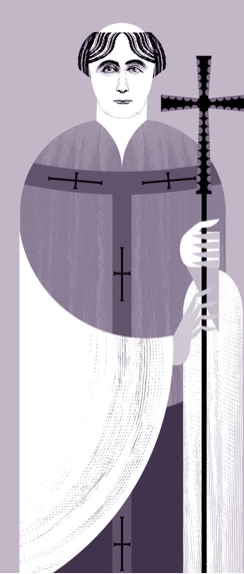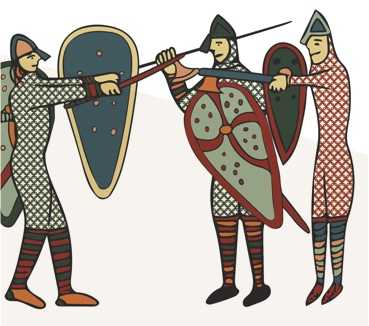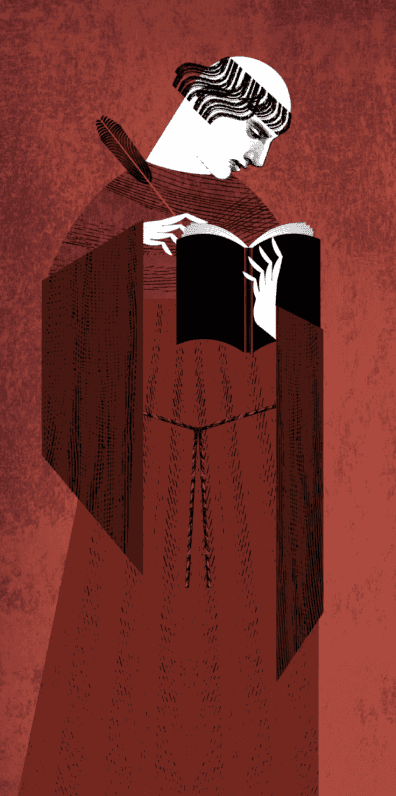A Walk Through Time activity sheets
Click here to find a programme of curriculum linked classroom activities and resources to support the ‘A walk through time’ resource.
Download activity sheetsFollowing the Norman conquest of England in 1066, the new king William the Conqueror installed a new Archbishop at Canterbury Cathedral. Archbishop Lanfranc began a big building project, rebuilding the Cathedral in the Norman style as a place of worship for a community of around 70 monks. Caen stone was brought by sea from Normandy and up the River Stour. The works took seven years to complete. A fire in 1174 destroyed much of Lanfranc’s work.
When the English King Edward died without leaving a male heir (the person who gets the title and property of another on their death) the English nobles nominated Harold Godwinson as King of England. However, two other men thought they had a claim to the throne. One of them was Harold Hardrada and the other was William, duke of Normandy, who believed Edward had nominated him as the successor. In 1066 he invaded and took the throne after he killed Harold at the Battle of Hastings. Duke William, became known as William the Conqueror. William marched his army to Canterbury on his way to London to be coronated (formally crowned king). The city surrendered and William ordered a castle to be built to control the population. His son, who was also called William, later had the castle rebuilt in stone.

Some of our evidence for the Norman invasion comes from a giant embroidery called the Bayeux Tapestry which depicts the Battle of Hastings. Some people think it might have been made in Canterbury shortly after the Normans arrived here.
The monks who lived in the monastery at Canterbury Cathedral followed some strict rules laid out in a book called the Rule of Saint Benedict. They met every day in the Chapter House to chant one of the 73 chapters of the book.
Saint Benedict had developed this way of living in around the year 500. The Rule told the monks to live simply and to work for God, to welcome strangers and give food to the poor.
Daily life for the monks was based around eight services of prayer which took place in the Cathedral Quire. During these services, they would sing psalms (sacred songs), listen to Bible readings and say prayers.
The monks lived together in shared buildings. They slept in the dormitory, warmed themselves in the common room and visited the necessarium or communal toilets which contained 55 seats.
Some monks had specific jobs within the monastery, such as the cellarer who managed the community’s food and drink and the infirmarian who looked after those who were sick or elderly. Other monks were scribes (writers) and spend a lot of time writing and decorating books and manuscripts by hand. These monks were experts in their fields and the work they produced was quite beautiful and therefore in great demand all over the country. They worked in the Cloisters, which is where the Novices (apprentice monks) had their lessons too. It must have been very chilly there in the winter!
The monks ate together in the refectory and were given two meals a day. All the food was prepared on site. There was a brewery for making beer, a bakery for bread and a kitchen that fed the whole community. The monks were not allowed to speak at meal times, so instead they developed their own special sign language.
The heart of the Cathedral and place the monks carried out their daily offices.
The Cloister was a place of conversation which linked the various parts of the monastery. The monks who studied here sat at stone benches called carrels. The Western Wall of the Cloister retains medieval building material.
The largest Chapter House in England. The monks met here daily to listen to readings from the Bible and the Rule of Saint Benedict and to discuss the day-to-day running of the monastery.
Although added after Lanfranc’s time by Prior Wibert, the existence of the Water Tower shows how important cleanliness was to the Rule of Saint Benedict and the monk’s daily lives.
This is an agreement between the Archbishop Thomas of York and Archbishop Lanfranc of Canterbury signed in 1072. It established that the Archbishop of Canterbury had ‘primacy’ over the Archbishop of York and put Lanfranc in ultimate control of the Church in England.
Click here to find a programme of curriculum linked classroom activities and resources to support the ‘A walk through time’ resource.
Download activity sheets© Dean and Chapter of Canterbury Cathedral

